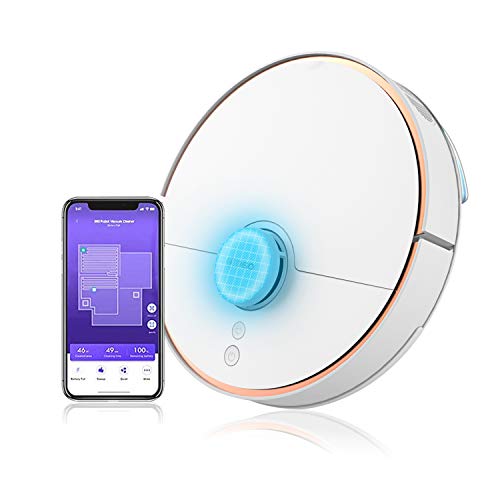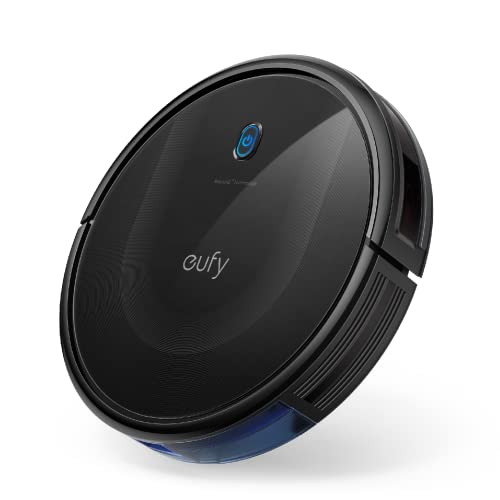
Robot Vacuum Mops
Add a review FollowOverview
-
Sectors Digital Transformation
-
Posted Jobs 0
-
Viewed 31
Company Description
10 Things That Your Family Teach You About Robot Vacuum And Mop
How to Maintain a Robot Vacuum and Mop
 A robot vacuum and mop can assist you in keeping your floors spotless on a regular basis. Set it to run according to a schedule and you’ll be able to return home to clean floors without any effort from you.
A robot vacuum and mop can assist you in keeping your floors spotless on a regular basis. Set it to run according to a schedule and you’ll be able to return home to clean floors without any effort from you.
Most robot vacuums that mop can be controlled and scheduled via an app. Some robot vacuums have self-emptying bins and many use microfibre pad that can be washed at will.
1. Simple to use
Robot vacuums and mops have been designed to be easy-to-use and maintain. However it’s important to recognize that they cannot clean everything for you. You’ll need to clean your own house periodically. Additionally, you might require replacing parts such as filters or wheels. Follow the recommended maintenance schedule set by the manufacturer to ensure optimal results.
When you first receive your robot, it’ll need to map out your home. This could take several weeks. During this process, it can bump into items or hit walls. This can be prevented by setting up “no-go” zones within the app. Once your robot is mapped out, you can also adjust settings such as suction power and mopping mode by using the app.
The app will also notify you when your accessories need to be cleaned or replaced. This will keep your robot running smoothly and efficiently for years. Based on the frequency of use, some parts will wear out more than others. For instance, brushes on a robot vacuum need replacing every six months. To improve the airflow, the dust filter of a robot vacuum needs to be cleaned at least once a week. This can be accomplished by taking the filter off and tapping it on a hard surface to release any loose debris. Rinse the filter with cold water until it’s clean. Let it dry before replacing it.
It’s a good idea to refer to your robot’s user manual before disassembling it. The manual will provide you with specific instructions on how to clean the robot and troubleshoot. You’ll need simple tools, including a trash can and a microfiber cloth, brush with soft bristles (an old toothbrush works well) and a pair of scissors. To ensure the best results, it’s a great idea to set aside one weekend each month to these tasks. After handling any soiled parts clean your hands using soap and warm water to sanitize. This will help you avoid injuries and contamination to your robot or yourself.
2. Suitable for all types of floors
The best robot mops can be used on hard and tiled floors. Some come with a selection of disposable or disposable mop pads that can be used dry or wet. The pads are usually machine washable to keep them clean and fresh. Some robot mop models have water reservoirs that can be filled with your preferred cleaning solution, while others utilize cleaners that are sold by the manufacturer. They also have a variety of settings available for mopping and sweeping.
Most robot mops can be used to clean under low furniture, along edges and in cluttered areas. They can also be stuck on small objects. It is essential to clear the area prior to beginning. Also, the mops will likely have to stop charging or empty their water tanks and you will need to be home during the time.
Most robot vacuum and mop manufacturers offer an overview of the cleaning process to assist you in planning your space. You can mark off rooms or areas that you wish to avoid cleaning and tell the robot to avoid these areas. Apps for most robot mops permit you to block carpeted areas.
If you have a mix of carpets and hard floors you should consider a robot that can vacuum and mop at the same time. During our Yeedi robot mop and vacuum tests it was awe-inspiring in how well it navigated through the pre-mapped space, adjusting to obstacles without snagging any areas. It also offered a wide range of mopping modes and worked well on ceramic tiles, hardwoods and carpeted stairs. The robot was simple to sync and set up and didn’t leave any streaks of wet flooring. It did, however, encounter some difficulties with an area rug. It had to reverse course, eventually and ended up under it, but then escaped without our assistance.
The iRobot Combo j7+ is our top-rated robotic mop and is a great option for busy homes with a variety of surfaces. It’s the first 2-in-1 model to come with a fully retracting mop pad that allows the robot to be lifted off rugs and carpets to prevent messy carpets caused by wetness. It also comes with clever iRobot OS 5.0 updates that add intelligence and personalization.
3. Easy to empty
It should be simple to clean and empty, whether you’re using a robot mop or vacuum. Otherwise, you’ll be busy with other tasks to keep the machine running. That’s why most robots come with an automatic dust bin that is empty, so you can easily dispose of the contents. This may seem like an insignificant convenience, but could make a significant difference to the experience.
Another important feature of a robot cleaner is the filter that traps dust and dirt. This ensures that your floors are as clean as they can be, and prevents dust from recirculating back into the air. It’s best to look for models that have the HEPA filter, which will trap the smallest particles, leaving your home with a clean atmosphere.
Some models come with a water tank that can be reused and a mop, which means you don’t have to purchase disposable cleaning supplies. This will reduce the amount of waste in your home and also save money over time.
When choosing a cleaner robot for your home, you should think about the size of the house and the amount of space available for the base and dustbin. The more space you have, the less often you’ll need to move the device around.
It is also recommended to look up reviews on the model before you buy it. This can give you a better idea of the reliability and what sort of problems it is likely to encounter. Also, make sure to check whether it has an app or a remote that can be useful for scheduling and tracking progress.
The advantages of a robotic cleaner are worth it especially when you consider that they are completely hands-free. You will save a lot of time if you are a busy parent having to balance work, kids and other chores. Just be sure to be aware of the battery and make sure that it has a low-charge indicator prior to you purchase.
4. Easy to maintain
Depending on the model that you have cleaning the filter or dust bin could be a straightforward process, while taking the main brush off and washing it could be a more complex process. It is also important to clean the sensors on the robot, particularly those that aid it to navigate and avoid obstacles in your home. It is recommended to remove these and wipe them down with a clean microfiber cloth each and every so often or apply a mild cleaning solution that’s safe for this type of equipment.
The main sensor in a robot vacuum is the one that carries dirt into the dust bin. However, it can become entangled with hair and other debris. The majority of models allow you to take out this part for simple cleaning. Spending a few minutes scrubbing with a microfiber cloth could be the difference between your device functioning as it should or not at all.
It is also important to wash and dry regularly the mopping pads or pads. This will stop the growth of bacteria growing on damp cloths and pads. This can cause the floor to smell and make them less efficient. Many manufacturers recommend washing the mopping pads or cloths in warm water and letting them dry completely before using them again.
The robot’s wheels and front bumpers should be cleaned regularly. Over time, they will accumulate dirt and hair and make it difficult for the robot to move. It is recommended to clean these gently with a clean microfiber cloth that’s not too wet or use a soft-bristled brush or toothbrush to get into hard-to-reach spots.
 The camera of the robot is another piece of equipment that is simple to clean. It is present on the majority of models, and it is responsible for taking pictures of your room. This is typically used to map out and create schedules and no-mop zones. The camera can be wiped with a clean, dry microfiber cloth or with a slightly damp melamine foam sponge. Make sure you read the manual for specific instructions on this.
The camera of the robot is another piece of equipment that is simple to clean. It is present on the majority of models, and it is responsible for taking pictures of your room. This is typically used to map out and create schedules and no-mop zones. The camera can be wiped with a clean, dry microfiber cloth or with a slightly damp melamine foam sponge. Make sure you read the manual for specific instructions on this.



